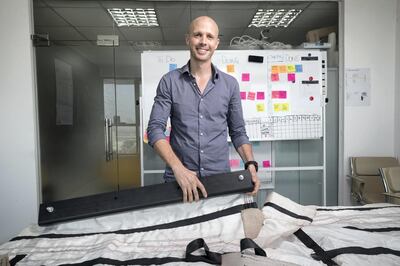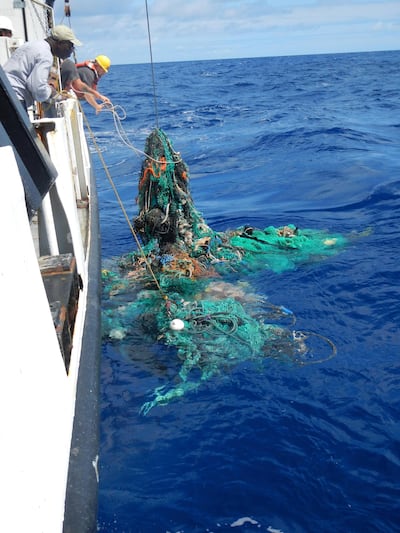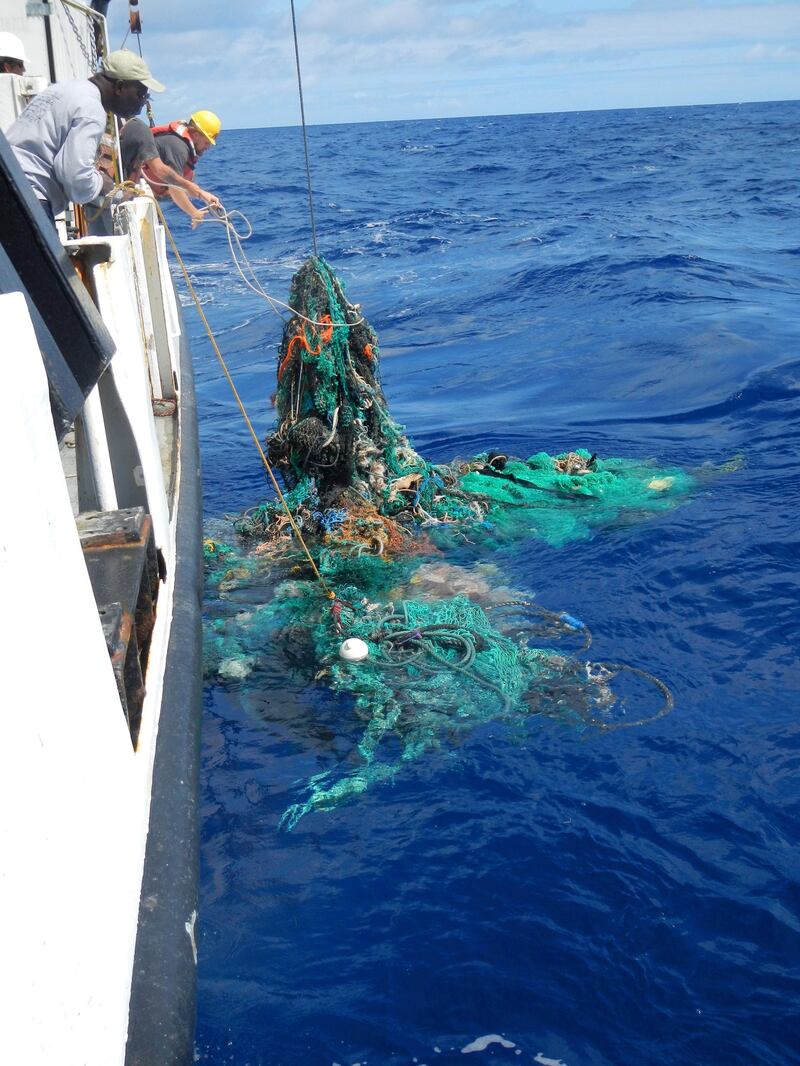A UAE company is playing a central role in the battle to remove plastic waste from our oceans by making the world’s largest floating barrier and skirt.
Ecocoast, which is based in Dubai and has a factory in Umm Al Quwain, is designing and making a strong but incredibly flexible screen, nearly 550 metres long and 3 metres deep, to catch and contain debris.
But the problem is huge and growing fast because plastic is everywhere. From carrier bags to coffee cup lids, from children’s toys to packaging, it has become a part of almost every aspect of human life.
Almost 300 million tonnes of plastic are generated each year worldwide, half of which is only used once.
It has brought many benefits but plastic waste is a growing problem on land and sea.
It is estimated that between 4.8 million 12.7 million tonnes of plastic finds its way into the oceans each year, adding to a pollution problem already causing harm to wildlife.
Plastic bags, thousands of which are produced every second, are eaten by whales and entangle smaller animals such as seals. Cigarette lighters and all manner of plastic packaging have been found in the stomachs of seabirds.
Unesco says that more than a million seabirds die each year as a result of plastic debris, as do 100,000 marine mammals.

Ocean currents cause much of the world’s marine plastic waste to become concentrated in a handful of areas, one of which, lying midway between California and Hawaii, is known as the Great Pacific Garbage Patch. Unesco says it is twice the size of Texas.
A study published recently in the journal Scientific Reports, written by researchers linked to the Dutch non-profit Ocean Cleanup and universities, indicated that the Great Pacific Garbage Patch contains 1.8 trillion pieces of plastic – together weighs 80,000 tonnes.
The organisation came up with the estimate after undertaking surveys by boat and plane.
______________
Read more:
UAE scientists concerned about 'catastrophic' plastic use across the globe
Campaign group asks restaurants to ditch single use straws and other plastics
______________
Ocean Cleanup, set up five years ago by Boyan Slat, 18, of The Netherlands, now employs 70 staff. It plans to send the world’s largest floating barrier to collect much of the waste.
And that is where Ecocoast’s expertise comes into play.
“This is completely unique, it’s something we developed specifically for this application,” says Australian Lachlan Jackson, managing director of Ecocoast.
“It’s one of the most challenging projects we have worked on because the manufacturing process is very complicated and detailed. Nothing on this scale has been done before.
“Reducing the amount of plastic that enters the waterways, the majority of which comes from the 10 largest rivers, is the most effective way to prevent further damage.
“But there’s damage that’s already occurred. I believe an engineering solution to clean up the pollution is required. I don’t believe a single case approach would be the best way.”
Ecocoast, which was founded in 2009 and has about 90 staff, designs and produces marine barriers such as silt curtains, which contain silt from dredging. The barrier it has designed and is making for the Ocean Cleanup is quite different.

It will have to cope with waves that, in the Pacific Ocean, can be more than 10 metres tall. It will also need to deal with the constant stress from the tidal movement of the water.
The barrier consists of a grid of abrasion-resistant polyester panels separated by horizontal and vertical tension bands, which make the panels more rigid.
In the areas most at risk of wear and tear, the curtain is up to eight layers thick. It hangs beneath a separately produced 1.2-metre diameter, high-density polythene pipe that provides buoyancy.
“It needs to be incredibly strong and incredibly flexible,” Mr Jackson says. “The flexibility was the most challenging thing because it’s over 550 metres long. It needs to be very flexible for the different wave heights.
“And it’s designed to be out there for in excess of a year, so durability from ultraviolet light and marine environments is important.
“It’s very labour intensive to handle it and move it around, and it requires customised equipment to put it together because the layers are so thick. It takes a lot of elements from the construction industry but on a larger scale.”
The screen weighs more than 5 tonnes and ballast weights of 24 tonnes are attached to keep it vertical. A flotation device supplied by Ocean Cleanup adds more than 150 tonnes, bringing the total weight to more than 185 tonnes.
In the North Sea, trials of a smaller version of the curtain have taken place with the structure either kept still in the water or towed by a tug to simulate the forces it will experience over time in the Pacific.
Trials are continuing in the North Sea and the first 120-metre section of the curtain has been shipped to the US, where further analysis is taking place off San Francisco to determine how it works under tow.
Tests will continue on the curtain and its parts until the full system, which will be assembled at the Ocean Cleanup’s yard in the San Francisco Bay area, is put to work in June or July.
“In terms of the testing, we’re going through a fairly diligent process,” Mr Jackson said. “Ambitious is probably an understatement. Working with them is absolutely great. They’re an NGO and they’re very passionate about what they do. They all really believe in the cause.”
The Ocean Cleanup hopes to remove half of the plastic in the Great Pacific Garbage Patch within five years, with the material collected to be taken back to land for recycling.






